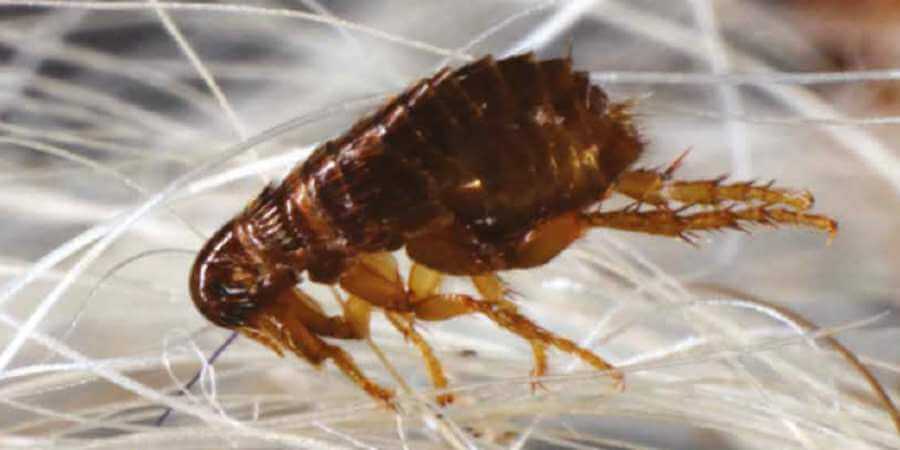
Adult fleas are normally 1-4mm long and brownish in colour. They're wingless but they have powerful legs for jumping.
Female fleas can live up to 2 years and lay up to 1,000 eggs.
Book pest control treatment for fleas
We offer domestic and commercial pest control treatment for fleas.
To book treatment:
- Check our pest control treatment prices.
- Call us to arrange a call-out or to book treatment.
Call 0300 303 8871 to book a pest control treatment
Where do fleas live?
Adult fleas live exclusively as parasites on warm-blooded animals.
Female fleas lay their eggs after feeding on the animal. The eggs drop onto flooring and fabrics, including animal bedding.
After several days, the eggs develop into larvae. It takes 2-3 weeks for larvae to fully develop. The larvae will then spin a cocoon where it'll spend a further 2 weeks before emerging as an adult flea.
Are fleas dangerous to my health?
Flea bites can irritate the skin. If you have any concerns, contact your GP for advice.
How do I know if I've got fleas?
Signs that you have fleas include finding:
- Your pet is constantly scratching. You can confirm this if you see fleas or their droppings on your pet's coat.
- Flea droppings. These are small black specks of dried blood and are easy to spot. If you comb your pet and wipe the comb with a damp tissue, the specks will turn red.
- Flea bites on you or your family. They can produce an allergic reaction and become intensely itchy.
How to control or treat fleas
To control your flea problem, you'll need to:
- Find where the fleas are coming from.
- If your pet is the source, your pet must be treated with a product approved for use on animals. Your pet's bedding and other materials your pet resides near must be washed at 60 degrees Celsius or above to kill all stages of flea development.
- Clear as much floor space as possible, removing loose items such as shoes, clothing and toys.
- Vacuum all areas of your home to remove any dust, hair, eggs, larvae and adult fleas can reduce the problem by 90 per cent.
- Empty the contents of your vacuum cleaner into the outside waste bin to prevent further problems.
Get professional help to treat fleas
You may need help from a professional to identify the source of the fleas.
A professional flea treatment will include applying a residual insecticide in liquid form. This will be applied to all floors and carpets.
These areas must not be vacuumed or washed for at least 10-14 days after treatment. The insecticide will carry on working over this period.

